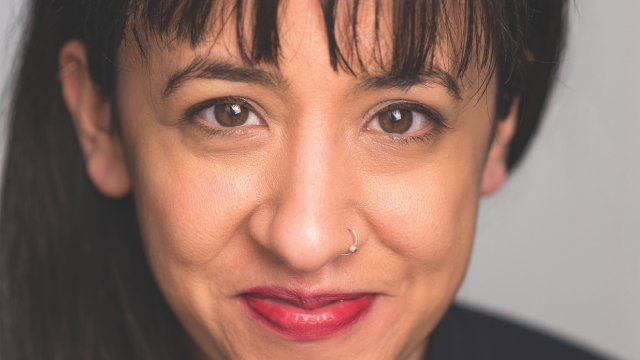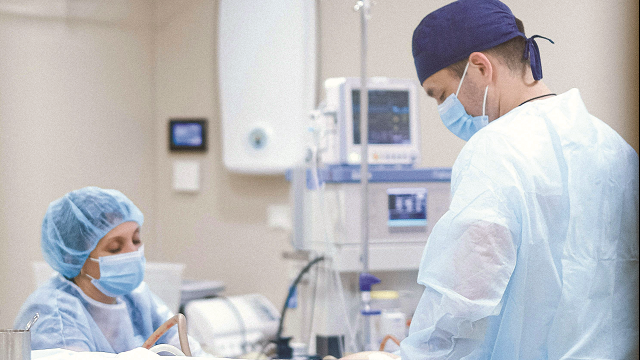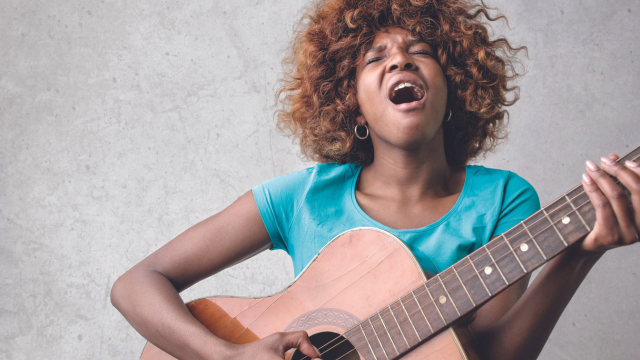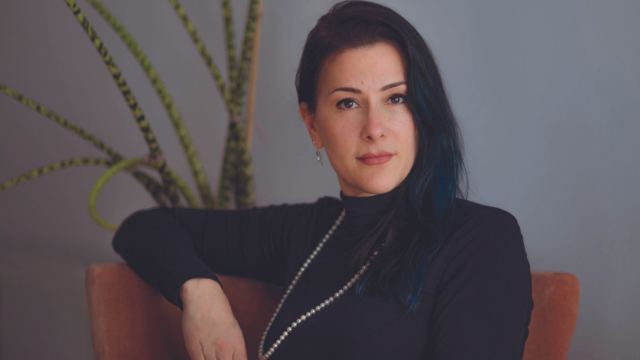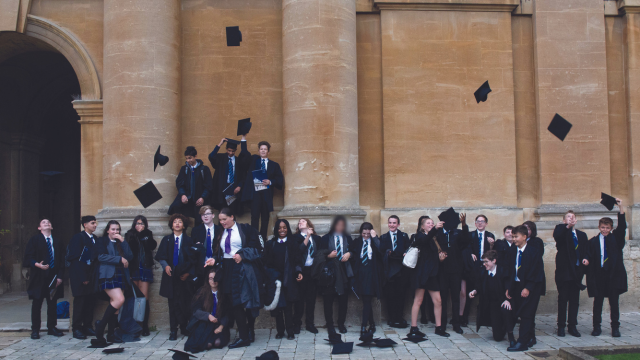-
QUALIFICATIONS
- For Linguists Worldwide
- For UK Public Services
- Preparation
- Policies & Regulation
-
MEMBERSHIP
- Join CIOL
- Professional Membership
- Affiliate Membership
- Chartered Linguist
- Already a member?
- Professional conduct
- Business & Corporate Partners
-
LANGUAGE ASSESSMENTS
- English
- All Other Languages
-
CPD & EVENTS
- Webinars & Events
- CIOL Conferences
- Networks
- CIOL Mentoring
-
NEWS & VOICES
- News & Voices
- CIOL eNews
- CIOL Awards
- The Linguist Magazine
- Jobs & Ads
-
RESOURCES
- For Translators & Interpreters
- For Universities & Students
- Standards & Norms
- CIOL & AI
- All Party Parliamentary Group
- In the UK
- UK Public Services
- Find-a-Linguist
So good they shot it twice
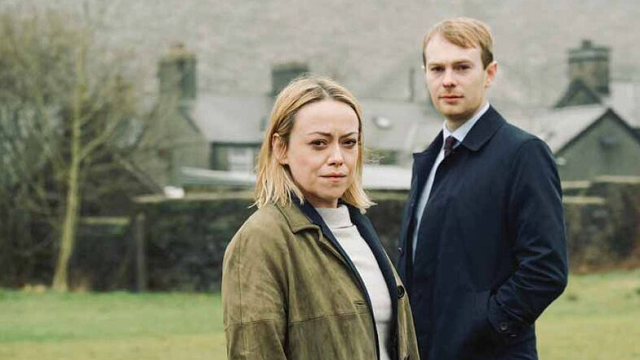 How are bilingual Welsh-English shows made? Miranda Moore speaks to the makers of Keeping Faith and Hidden to find out
How are bilingual Welsh-English shows made? Miranda Moore speaks to the makers of Keeping Faith and Hidden to find out
Faith Howells is one of those roles that actors dream of playing. Relatable, funny, empassioned and complex, the character had viewers gripped as she struggled to make sense of her husband’s disappearance in the surprise BBC hit Keeping Faith. Eve Myles brought charisma, strength and vulnerability to the part, which was reportedly written for her. Yet she has admitted to turning it down four times because she doubted her ability to learn the Welsh script.
Shot in both English and Welsh, and co-commissioned by the Welsh-language channel S4C, the show was first broadcast in Wales as Un Bore Mercher. Its success – it was one of the BBC’s top five shows of 2018 – marked a significant milestone for S4C. Established with government funding in 1982 following a campaign by Welsh-language activists, the channel initially broadcast a mix of Welsh-language content and English-language shows from Channel 4 (which launched at the same time). Under scrutiny from Westminster, it was criticised for poor viewing figures, but by 2019-2020, 11.5 million people across the UK were watching its shows (more than three times the population of Wales). Since 2010, it has broadcast entirely in Welsh.
Dual language series with two different versions (usually one entirely in Welsh and one entirely in English) are distinct from bilingual shows, where the two languages mix in each episode. S4C’s first attempts included Tân ar y Comin/A Christmas Reunion, starring Edward Woodward (1993). But it wasn’t until the success of Scandi noirs such as The Killing and The Bridge that the channel found a tried and tested model of filming back to back (with each scene shot in one language and then the other). The joint S4C/BBC Wales drama Y Gwyll/Hinterland became the first breakout success of its kind, with Netflix picking up the English version.
First airing in 2013 and running to three series, Hinterland firmly established the Welsh noir genre, pushing boundaries when it came to including Welsh-language dialogue in the English script. Its success is credited as showing proof of concept for bilingual programming, paving the way for more Welsh-language content in future back-to-back productions. When Craith/Hidden followed in 2018, there was a Welsh version and a bilingual version that was predominantly in English but included episodes with almost 50% of the scenes in Welsh.
Executive Producer Ynyr Williams spoke to me as filming on the third series was coming to an end. “You have to have credibility so that the sales agents and distributors know that you will deliver something in two languages which is strong and dramatically interesting, and I think that’s what happened with Hinterland,” he says,
Who speaks what?
The first episode of Hidden begins with a scene in English, as DCI Cadi John (Siân Reese-Williams) speaks to her terminally ill father after a long absence. Subsequent scenes are entirely in Welsh: as the body of a young woman is discovered, the detectives interview her father; in a remote cottage the perpetrator interacts with his mother and daughter. A nurse uses the phrase ‘No rest for the wicked’ in her Welsh-language chatter, as English words perforate the Welsh dialogue, reflecting the way people speak in bilingual areas. “The great thing about Hidden, and Hinterland before it, is that it shows a bilingual country where it is totally natural in some places to speak Welsh and English at the same time,” says Williams by phone from Caernarfon, a castle town where the two languages mix freely in everyday conversation.
Decisions are made about which language to use for each scene during the early stages of production. “I usually talk with the producers about the precincts where Welsh would be the predominant language. There were about five or six scenes in a cottage and all of that was shown in the Welsh language, because we thought that that would be the natural language for that location,” he says.
“The producers and myself speak at least two languages, so we’ve an innate understanding of the linguistic issues of Wales, geographically, politically, procedurally and socially, so all those factors play into the decision-making process.” In the second series of Hidden there are several scenes in a secondary school in Gwynedd, and although many of the young people speak English to each other, the teachers speak only in Welsh, reflecting the Welsh-first policy of schools in this part of Northwest Wales.
Interestingly, where scenes are shot in both languages, there can be a different dramatic tension in each version. This was particularly evident in Richard Harrington’s performance as DCI Tom Mathias in Y Gwyll/Hinterland, which Williams worked on as a producer. “I know that Rich Harrington has said the emotional charge of the languages could be really different in Welsh and in English, and some of the actors commented that his performance did change. Some words will give you a different dynamic drive, especially in Welsh where the consonants are harder. At times it’s easier to be in somebody’s face in a language that is consonantly hard.”
For Reese-Williams, who was raised bilingually in Mid Wales, “there is a different vibe in the Welsh – it feels more authentic in a way. This is probably because in real life these characters are Welsh speakers and would be speaking Welsh to each other naturally.” Where a scene works particularly well in one language, the producers may decide to use it for both versions. “Always with these thought processes it’s about the dramatic input of the language,” explains Williams.
How filming works
These dramatic differences can cause unexpected challenges. “You have to play around with – and be aware of – your performances in relation to where you want to be at the end of the scene. Because shooting out of sequence, as they do, the language could have taken you somewhere in a scene, but you have to make sure you’re in the right place for the story,” he adds.
Filming back to back extends the shoot by about a third, according to Craith/Hidden Producer Hannah Thomas, so it takes 16 weeks to shoot six episodes in both versions. “The actors are very adept at switching between languages, so we will do it shot by shot: we’ll do the wide in English and then in Welsh, then we’ll move in to get the close-up.” It helps to start each scene in the language that was used last for the previous scene (e.g. English, Welsh; Welsh, English).
Although most actors and crew members are bilingual, filming instructions are given in English to make sure everyone understands. “There’s a kind of nod to make sure that everybody understood the dynamics of the scene in one language before moving on to the other,” explains Williams.
For the same reason, Hidden is written in English first, even though the writer, Carol Lewis, is a prolific Welsh-language writer. “Some of our financiers don’t speak Welsh, so she will write in English first and then adapt her own script into Welsh,” says Thomas. “For the purpose of getting everyone on board we have to go English first.”
With the exception of S4C’s most recent co-production, Yr Amgueddfa/The Museum, titles rarely have the same meaning in both languages. Keeping Faith clearly wouldn’t work in Welsh (un bore mercher means ‘one Wednesday morning’), while craith (‘scar’) and y gwyll (‘the dusk’) were adapted as ‘hidden’ and ‘hinterland’. “It was a collective endeavour. Craith, I think, is a lovely sounding word where ‘scar’ perhaps isn’t, and in Welsh it also speaks to a craith in the land in a way that maybe in English it doesn’t. It just has a little bit more heft in Welsh. So we were trying to think of an English title that would reflect the themes of keeping secrets hidden, of keeping emotions hidden,” says Thomas.
The expansive Welsh landscape is central to Welsh noir, rooting the drama in the wilderness. The title Hinterland clearly speaks to this, and according to Williams, Y Gwyll has a similar feel: “In Welsh you would say ‘this landscape is very dusk-like’ because it’s grey-ish, very dark, kind of gloomy. The worst thing we could do would be to literally translate something like this.”
Getting the green light
For a channel operating in a language spoken by less than 900,000 people, the benefits of co-commissioning a dual language production are many. The fact that two broadcasters have sufficient faith in a series to invest in it, and that an English version is available, boosts confidence among distributors and sales agents. In addition, “having another broadcaster on board instantly doubles the budget”, says S4C’s Drama Commissioner Gwenllian Gravelle.
However, it’s about much more than finances. “It’s about making sure that our shows are a representation of Wales and the people of Wales, so it’s a real responsibility,” she adds. BBC Wales also shares this aim, fulfilling its public service remit by providing programmes in Welsh. “We work well together because we’ve both got the same goals,” Gravelle confirms. “But we also have a few projects in development with other UK broadcasters, which is very exciting.”
For Welsh-speaking creatives who choose to stay in Wales this sense of responsibility is personal. “I feel very lucky – I think we all do – to be able to film in Welsh and to play a part in ensuring that Welsh survives not only in Wales, but also that it’s heard internationally. Because lots of people see it as a dying language, which it isn’t – it’s a vibrant, growing modern language,” says Thomas.
This linguistic reality is increasingly reflected in S4C programming, as the channel strives to be more representative. “Our channel Hansh, for younger viewers (16+), is a bit more relaxed with the language, you know, whereas 40 years ago when S4C started it wasn’t as bilingual,” explains Gravelle. Watching Yr Amgueddfa in Welsh on the S4C app, I was struck by the amount of code-switching, especially among the younger characters, which reflects this more natural approach.
“We’re also trying to encourage our sort of lost audience of mixed households – of people who can speak Welsh but maybe their partner can’t – saying, ‘You don’t have to be fluent to enjoy our dramas.’” In addition to subtitles in English, S4C now includes Welsh subtitles for some of its shows to support language learners and children.
This is another area which has been positively impacted by Scandi noir and the subsequent increase in foreign-language TV, driven largely by Netflix. “People who love drama are getting much more used to reading subtitles,” says Gravelle. “[Bilingual show] Bang has been shown on Acorn TV in America; 35 Days/35 Diwrnod is on Britbox and that’s all in Welsh, so things are changing; people aren’t as afraid of subtitles any more.”
When a show is picked up by a global streaming service, it also raises awareness of Wales’s potential around the world. “I think people see that within just a 200 mile radius there’s a lot of different kinds of landscapes and there’s an industry here full of Welsh creatives who are used to making shows,” she adds. Sky’s forthcoming thriller Extinction is filming in Cardiff as we speak, and parts of The Crown were shot in Aberystwyth and Caernarfon, with subtitled dialogue in Welsh from Keeping Faith actor Mark Lewis Jones.
It is rare for monoglot English speakers to be cast in these productions, and Eve Myles’ candour about her initial reluctance to learn Welsh and the subsequent joy she found in it has encouraged audiences to give language learning a go. “I guess I’m a classic example of someone who didn’t think it was possible. And it really is,” she said.
If S4C’s remit is to make high-quality, inclusive drama for the people of Wales, it is achieving this while fulfilling further goals of representing Wales and the Welsh language on a global platform. As Thomas says: “Ed [Talfan], who’s the co-creator of Hinterland and Hidden, has demonstrated that language can sell – that people can tune in to Welsh.”
Visit s4c.cymru/clic to watch S4C online.
More
The Chartered Institute of Linguists (CIOL), Incorporated by Royal Charter, Registered in England and Wales Number RC 000808 and the IoL Educational Trust (IoLET), trading as CIOL Qualifications, Company limited by Guarantee, Registered in England and Wales Number 04297497 and Registered Charity Number 1090263. CIOL is a not-for-profit organisation.


